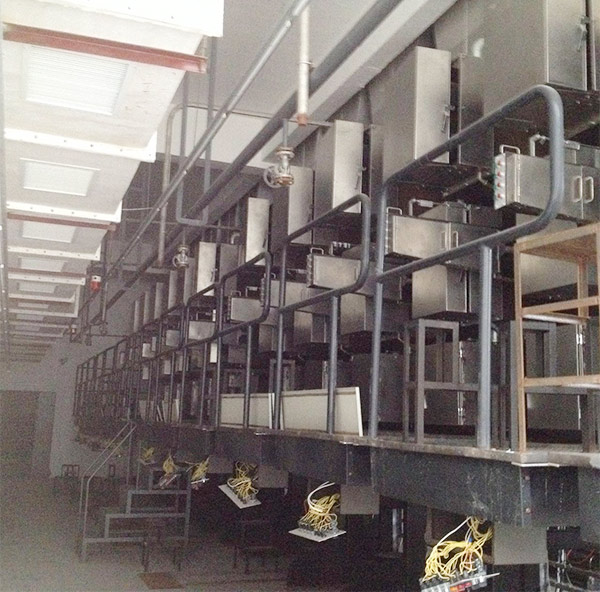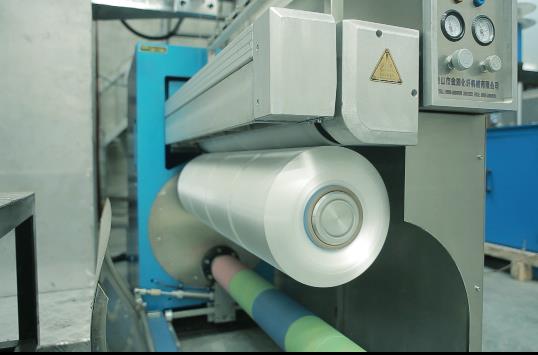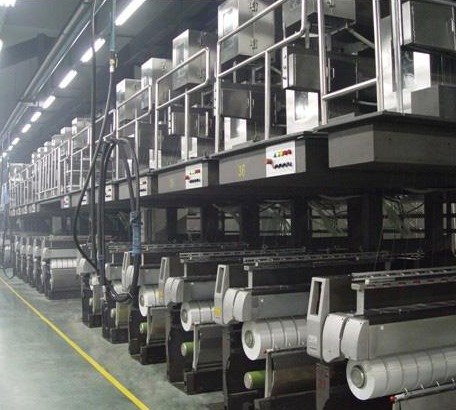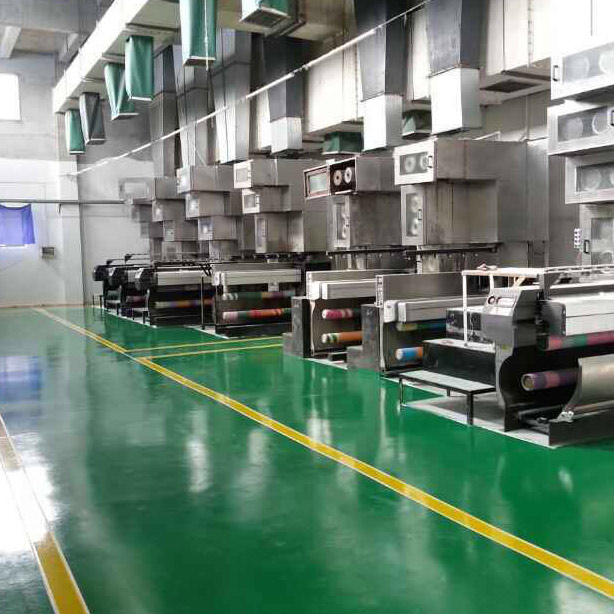- Polypropylene spinning machine
- Polypropylene FDY equipment
- Polyester POY spinning machine
- Polyamide FDY common and high strength equipment
- Polyester FDY equipment
- Polyester high strength equipment
- polyester、Polyamide、 Polypropylene BCF equipment
- Small spinning machine
- All kinds of spinning special parts
- A Guide for Managers to Break Through: Empowerment Rather than Control: Helping Enterprises Bid farewell to Internal Friction and Activate the Intrinsic Motivation of Teams!
- The 2025 Textile and Garment Innovation Annual Conference and the Gongqingcheng Down Industry Development Conference came to a successful conclusion
- The technological upgrade of polypropylene FDY spinning machines empowers the production of diversified chemical fibers
- Textile News: Full-chain Efforts + Cross-border Breakthroughs + Talent Foundation - The Textile Industry is set to Experience a Development Trio!
- The 2025 China Home Textile Fashion Innovation Conference grandly kicked off in Binzhou
- On the Important Role of Polypropylene Spinning Machines in Chemical Fiber Production

- Contact:Mr. Huang Guofu
- Cel:0086-13901505556
- Fax:0086-519-83341119
- Email:czfb5556@126.com
- Add:No. 288-8 ChangLi Rd, Huangli Town, Changzhou, JS PRV.
"Gold Nine Silver Ten"
The textile peak season starts a "price war"!
Interpretation of Macroeconomic Environment of Textile Industry
Since the beginning of this year, complex factors such as repeated epidemics, protracted geopolitical conflicts, and tightening of the international financial environment have continued to impact the global economic recovery process. Overall high inflation in the third quarter and abnormally hot and dry weather in the northern hemisphere have exacerbated the contradiction between supply and demand, and the slowdown in economic growth has become more apparent. In August, the J.P. Morgan Global Manufacturing Purchasing Managers Index (PMI) was 50.3, a 26-month low, only slightly above the line of prosperity and decline, of which the new orders index was 48.2, the market demand continued to be sluggish, and the momentum of global economic recovery weakened . In July, the OECD consumer confidence index was 96.2, which has been in the contraction range for 12 consecutive months, and has been slowing down month by month since the beginning of this year. In the third quarter, the WTO global trade in goods barometer index rose to the benchmark level of 100, but was 10 percentage points lower than the same period of the previous year. The global commodity prices fell slightly from the high level in the first quarter, but the IMF primary product and energy prices in July still increased by 38.4% and 90.1% year-on-year respectively, and the inflation pressure has not eased.
In the face of demand contraction, supply shock, and weakening expectations, the three expected pressures and the domestic epidemic and the Russian-Ukrainian conflict were two unexpected shocks. In the first half of the year, my country's GDP achieved a growth of 2.5%, and the economy bottomed out and rebounded.
Since July, my country's economy has overcome the impact of epidemic floods and fluctuations in high temperature weather, and the economy has continued to recover, but the basis for recovery still needs to be consolidated. Statistics show that from January to July, the total retail sales of consumer goods across the country decreased by 0.2% year-on-year, the total export value (in U.S. dollars) increased by 14.6% year-on-year, and the industrial added value of enterprises above designated size increased by 3.5% year-on-year. and 0.1 percentage points; the total profit during the same period decreased by 1.1% year-on-year, and the growth rate fell by 2.1 percentage points compared with the first half of the year.
Affected by factors such as frequent outbreaks of epidemics, continued high temperature and rainy weather, and power cuts in Sichuan, Chongqing and the middle and lower reaches of the Yangtze River, my country's manufacturing PMI continued its weak recovery since July, although it rebounded 0.4 percentage points from the previous month to 49.4%, but still in contractionary territory.
"Price war" in peak season
With the arrival of the traditional textile peak season of "Golden Nine Silver Ten", some downstream textile factories have begun to receive new orders one after another. Although the demand for products has increased, the situation of buying and selling on demand by all parties in the market seems to have gradually evolved into a business enterprise. "price war". The peak season is here, I thought it was a "turn over", but it turned out to be a "price war"!
At present, although the order situation in the fabric market has improved, it is not uncommon for clothing brands and buyers to "price down". In order to digest inventory, some companies can only choose to sell products at low prices.
Li Jiangwei, the corporate sales director of Yuding Textile Co., Ltd., admitted that in the past, he did not recommend the company's salesmen to accept orders at low prices, because the order is usually hidden behind the extremely demanding procurement process. The market conditions are changing rapidly. As long as there is an increase in the price of products in one link, the order may not be profitable. "However, this year's situation is rather special. The overall market demand is not strong, and the company still has to maintain a basic operating rate. Therefore, we will depend on the situation. If the customer has the possibility of long-term cooperation in the future, we will appropriately lower the price. "
"We chose to sell at a low price as a last resort." Chen Dehan, the relevant person in charge of Shengtong Textile Co., Ltd. told reporters that the main reason is that the supply exceeds demand in the market. Once the price of enterprise products is raised, they will be "rejected" by clothing enterprises. risk. He said: "The price of some textile raw materials has risen, but it cannot be used as a 'chip' for the price increase of fabric products. For example, the price of polyester filament has recently increased by 100 or 200 yuan per ton, but downstream buyers do not Recognizing this offer, they will also negotiate the price based on the low price of polyester filament in the previous period."
Not only small and medium-sized enterprises have fallen into the dilemma of low profits, but some listed companies have also experienced a deviation between revenue and net profit. In the first half of 2022, Huafang Co., Ltd. achieved an operating income of 1.828 billion yuan, a year-on-year increase of 8.33%; the net profit attributable to shareholders of the listed company was 2.4292 million yuan, a year-on-year decrease of 66.06%. Zhejiang Yingfeng Technology Co., Ltd. achieved revenue of 664 million yuan, a year-on-year increase of 47.63%; net profit attributable to shareholders of listed companies was 11.3091 million yuan, a year-on-year decrease of 120.17%. Fujian Fengzhu Textile Technology Co., Ltd. achieved an operating income of 610 million yuan, a year-on-year increase of 2.26%; the net profit attributable to shareholders of the listed company was 14.7923 million yuan, a year-on-year decrease of 53.26%.
Textile people worry about the market outlook
The market has reached the traditional peak season of "Golden Nine Silver Ten", but the performance of the peak season is not satisfactory, and the gap is larger than expected. In August, the market had some signs of starting up. Grey fabrics sold better, orders increased, and the operating rate of looms increased. Most merchants have certain expectations for "Golden Nine Silver Ten". After entering the peak season, the market has improved to a limited extent. Although orders have continued, they are still worse than the peak seasons of previous years.
From the fact that all parties in the market are vying for sales opportunities, it reflects the concerns of textile people about the market outlook, the urgency to stop losses in time, and the expression of risk aversion.
Before making money, there was no risk awareness. The transfer of orders in Southeast Asia under the epidemic made companies desperately expand production capacity on new lines and large lines, fearing that they would lose the opportunity to grab money. However, the law of the market tells us that the supply-side market formed without the support of strong demand is a fake demand. After the bubble, there is no order left, which leads to the situation that the startup cannot be started normally, and the market is chaotic because of the lack of startup. , price confusion.
Peak season drop start
According to the reflection of pure cotton yarn cluster enterprises, the current operating rate of enterprises is about 70%, which is higher than that of last month. Most companies have raw material inventories ranging from 20 to 40 days. Due to the fluctuation of raw material prices in the early stage, the inventory loss of enterprises was relatively large, resulting in tight capital turnover. The new cotton is about to be listed, and companies mainly focus on destocking, and at the same time cautiously wait and see. In the face of operating pressure, we will speed up the transformation in the later stage and actively adapt to market changes.
This year's market can't afford to hurt, and it has become the voice of many textile bosses. At present, the transaction in the market has improved, and the trucks carrying grey fabrics have also become lively in the market. However, the difference is that it is reported that some companies in the market have experienced a special situation in which the start-up of the market has dropped during the peak season. Hit a big question mark!
Fourth Quarter Industry Outlook
Since the third quarter, the off-season market in the textile industry has been obvious, production orders are still insufficient, the operating rate has remained at a low level, and the prices of finished products experienced a rapid decline from mid-June to mid-July and then fluctuated at a low level. The pressure on capital was eased, and the pressure on profit continued to increase. Under this situation, the growth rate of industry production and efficiency indicators has slowed down significantly, and the decline in profits has continued to expand.
Looking forward to the fourth quarter, the external environment will become more severe and complex, the restraining effect of global liquidity contraction on terminal demand will continue, and the adverse impact of inflation and high energy prices in some regions on the consumption of textile and apparel products will be further manifested, and the export market will face volatility risks . The domestic sales of the textile industry will recover under the influence of the autumn and winter consumption season. The strength of domestic demand recovery will be the key to the bottoming out of the industry's operation. The domestic market will become the backbone of stabilizing the development of the textile industry.
- A Guide for Managers to Break Through: Empowerment Rather than Control: Helping Enterprise
- The 2025 Textile and Garment Innovation Annual Conference and the Gongqingcheng Down Indus
- The technological upgrade of polypropylene FDY spinning machines empowers the production o
- Textile News: Full-chain Efforts + Cross-border Breakthroughs + Talent Foundation - The Te
- The 2025 China Home Textile Fashion Innovation Conference grandly kicked off in Binzhou
- On the Important Role of Polypropylene Spinning Machines in Chemical Fiber Production
- Management Skills: Managing Problems = Managing Efficiency: Anchor the essence of manageme
- Shandong is promoting the transformation and upgrading of its textile industry through int
- Guide to Parameters of Polypropylene Spinning Machine Equipment
- The second Smart Fiber and Flexible Wearable Technology Exchange Conference was held in Na




